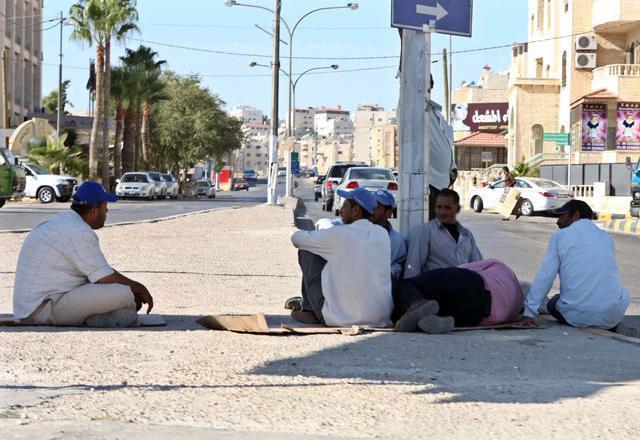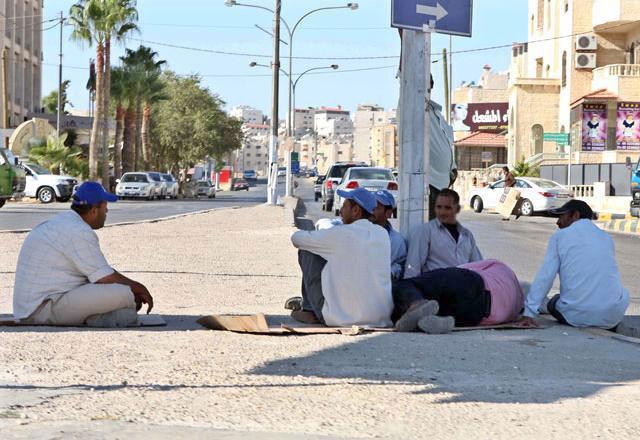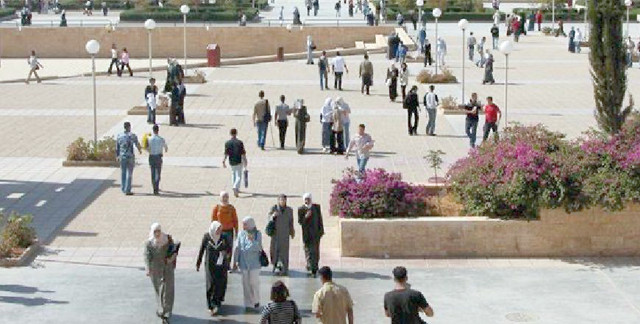You are here
Jordan's unemployment rate decreased to 22.8% in Q1 of 2022 — DoS
By JT - Jun 20,2022 - Last updated at Jun 20,2022

The DoS noted that the unemployment rate for males was 20.5 per cent in the first three months of this year, compared with 31.5 per cent for females (file photo)
AMMAN — Jordan's unemployment rate went down by 2.2 per cent in the first quarter of 2022 to 22.8 per cent, compared with the same quarter of 2021, the Department of Statistics (DoS) showed on Monday.
The DoS noted that the unemployment rate for males was 20.5 per cent in the first three months of this year, compared with 31.5 per cent for females, the Jordan News Agency, Petra, reported.
Compared with the figures from the first quarter of last year, the unemployment rate for men dropped by 3.7 per cent while it grew by 3 per cent for women.
Compared with the figures from the fourth quarter of last year, male unemployment decreased by 0.9 per cent, while female unemployment rose by 0.8 per cent in the first quarter of this year.
In comparison with other educational levels, the unemployment rate among university degree holders (unemployed persons with a bachelor's degree or higher divided by the labour force of the same educational qualification) increased to 26.6 per cent.
According to the results, 52.3 per cent of the overall unemployed population holds secondary education degrees or higher, while 47.1 per cent has educational qualifications lower than secondary school.
Unemployment rates differed by educational level and gender, where 24.6 per cent of unemployed males hold a bachelor's degree or higher compared to 78.7 per cent of unemployed females.
At the governorate level, Mafraq had the highest unemployment rate of 28.7 per cent, while Zarqa had the lowest rate of 19.2 per cent.
The employed share of the total population aged 15 and above was 25.7 per cent, with 59.4 per cent of male employees in the age range 20-39 years and 60.3 per cent of female workers in the age group 20-39 years.
The outcomes of the DoS report revealed a considerable difference in the distribution of the workforce by educational level and gender, with 59.2 per cent of the entire male labour force having less than secondary education, compared with 11.1 per cent for females.
The findings also indicated that 71.2 per cent of the overall female workforce holds a bachelor's degree or higher, compared with 24.7 per cent among males.
For the first quarter of this year, the revised economic participation rate (the labour force attributed to the population 15 years and older) was 33.2 per cent – 53.2 per cent for males and 13.7 per cent for females – compared with 34.5 per cent – 54.8 per cent for males and 14 per cent for females – in the same quarter of 2021.
Related Articles
AMMAN — The unemployment rate in the first quarter of 2018 stood at 18.4 per cent, up by 0.2 per cent when compared to the first quarter of
AMMAN — Jordan's unemployment rate went down by 0.4 per cent in the last quarter of 2022 compared with the same period in 2021, reaching 22.
AMMAN — The unemployment rate in the Kingdom went down by 0.1 per cent in the third quarter of 2022 to reach 23.1 per cent, compared with th


















